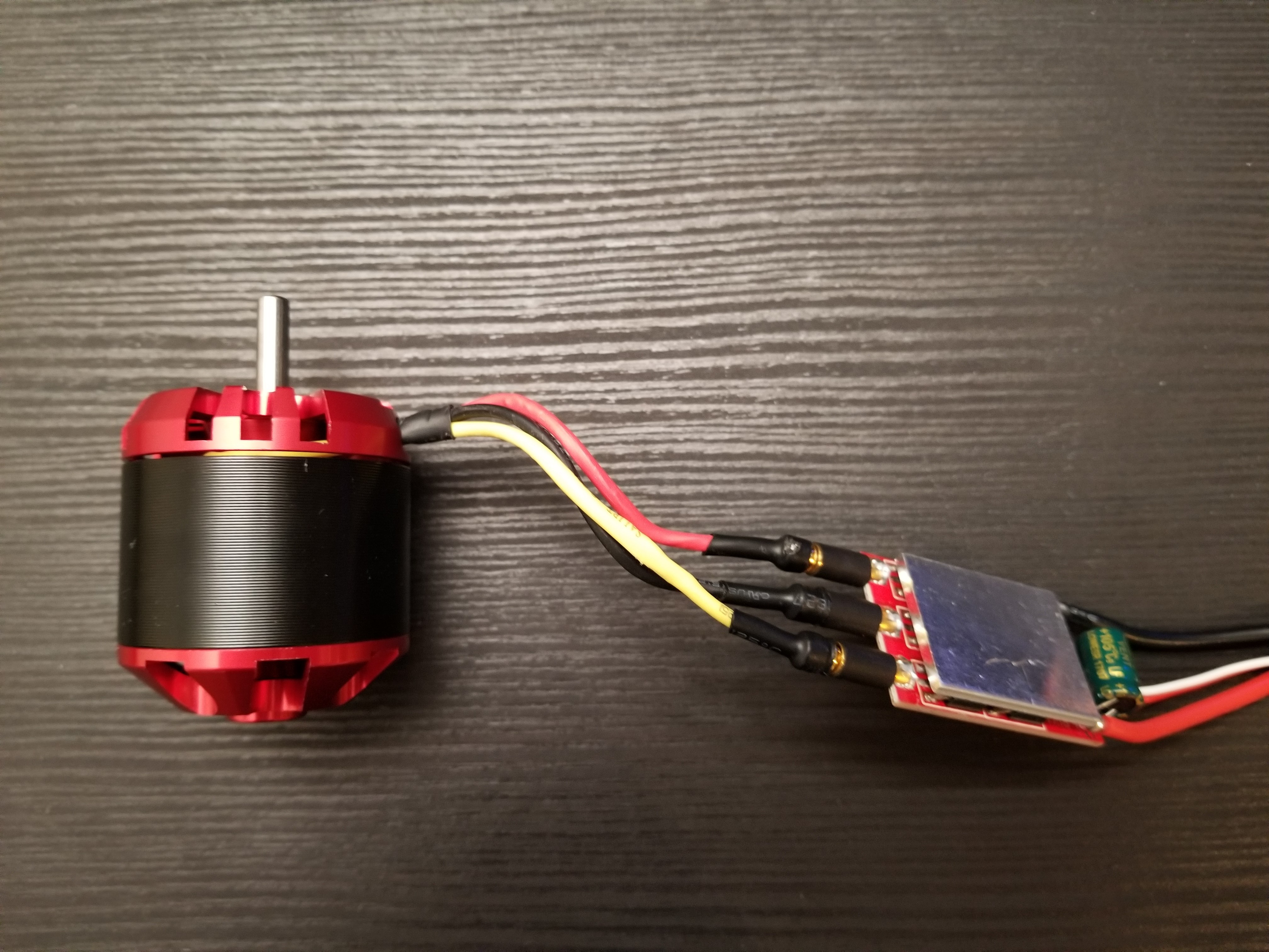Buckle up and prepare for an in-depth exploration of Electronic Stability Control (ESC), a game-changer in the realm of vehicle safety. Join us as we delve into the fascinating world of ESC, uncovering its purpose, benefits, operation, and future advancements.
ESC has revolutionized road safety by preventing countless accidents and saving lives. Its sophisticated system of sensors and controls monitors vehicle dynamics, intervenes when necessary, and helps drivers maintain control even in challenging driving conditions.
Overview of Electronic Stability Control (ESC)
Electronic Stability Control (ESC) is a safety system designed to improve a vehicle’s stability, especially during cornering and evasive maneuvers. It works by detecting and correcting potential loss of control situations, such as skidding or rollover.
ESC systems typically consist of the following components:
- Wheel speed sensors monitor the rotational speed of each wheel.
- Steering angle sensor measures the angle of the steering wheel.
- Yaw rate sensor measures the vehicle’s rotational speed around its vertical axis.
- Lateral acceleration sensor measures the vehicle’s sideways acceleration.
- Hydraulic control unit actuates the brakes individually to correct the vehicle’s trajectory.
Benefits of ESC
Electronic Stability Control (ESC) is a life-saving technology that helps prevent accidents by controlling a vehicle’s stability during cornering and other maneuvers. ESC has been proven to be highly effective in reducing crashes, rollovers, and fatalities.
Safety Benefits of ESC
According to the National Highway Traffic Safety Administration (NHTSA), ESC reduces fatal single-vehicle crashes by 43% and rollover crashes by 75%. ESC also reduces non-fatal crashes by 35%.
ESC works by using sensors to detect when a vehicle is losing control. When this happens, ESC applies the brakes to individual wheels and adjusts the engine power to help keep the vehicle stable.
For example, if a vehicle is about to skid, ESC will apply the brakes to the outside wheels and reduce engine power. This helps to keep the vehicle from spinning out of control.
Cost-Effectiveness of ESC
ESC is a cost-effective way to prevent accidents and save lives. The NHTSA estimates that ESC saves over 5,000 lives each year.
In addition to saving lives, ESC can also save money. A study by the Insurance Institute for Highway Safety (IIHS) found that ESC reduces insurance claims by 20%.
Recommendations for Promoting the Use of ESC
ESC is a proven life-saving technology that should be standard on all vehicles. Here are some recommendations for promoting the use of ESC:
* Educate consumers about the benefits of ESC.
* Require ESC on all new vehicles.
* Provide incentives for manufacturers to install ESC on older vehicles.
Operation of ESC
Electronic Stability Control (ESC) is an advanced safety feature that helps prevent loss of control by monitoring vehicle dynamics and intervening to correct any instability.
ESC monitors various vehicle parameters, including:
- Steering wheel angle
- Vehicle speed
- Yaw rate (the rate at which the vehicle is rotating around its vertical axis)
- Lateral acceleration (the acceleration of the vehicle perpendicular to its direction of travel)
When ESC detects that the vehicle is losing stability, it intervenes by:
- Applying brakes individually to each wheel
- Reducing engine power
These interventions help to correct the vehicle’s trajectory and prevent it from skidding or rolling over.
Applying Brakes Individually to Each Wheel
ESC can apply brakes individually to each wheel to correct vehicle stability. This is done by using a hydraulic modulator that controls the amount of brake fluid sent to each wheel.
For example, if the vehicle is oversteering (turning too much), ESC can apply the brakes to the inside rear wheel to help bring the vehicle back into line.
Reducing Engine Power
ESC can also reduce engine power to help correct vehicle stability. This is done by sending a signal to the engine’s electronic control unit (ECU), which then reduces the amount of fuel injected into the engine.
Reducing engine power helps to slow the vehicle down and reduce the amount of force that is being applied to the wheels. This can help to prevent the vehicle from skidding or rolling over.
Check Polarlichter Deutschland to inspect complete evaluations and testimonials from users.
ESC in Different Vehicles
ESC systems are not all created equal. They are tailored to the specific characteristics and challenges of different vehicle types.
For example, ESC systems in cars are typically designed to maintain stability during cornering and avoid skidding. They do this by applying brakes to individual wheels and adjusting engine power. In SUVs and trucks, ESC systems must also account for the vehicle’s higher center of gravity and greater tendency to roll over. As a result, these systems often use additional sensors to measure roll angle and yaw rate.
ESC in Cars
- Designed to maintain stability during cornering and avoid skidding.
- Applies brakes to individual wheels and adjusts engine power.
ESC in SUVs and Trucks
- Accounts for the vehicle’s higher center of gravity and greater tendency to roll over.
- Uses additional sensors to measure roll angle and yaw rate.
ESC and Other Safety Systems
ESC is not an isolated safety feature; it integrates seamlessly with other active safety systems to provide a comprehensive approach to vehicle safety. One of the most significant integrations is with the Anti-lock Braking System (ABS) and Traction Control System (TCS).
ABS and ESC Integration
ABS prevents the wheels from locking during braking, allowing the driver to maintain control and steering ability. ESC, on the other hand, detects and corrects potential skids by applying individual braking force to each wheel and adjusting engine torque. The integration of these systems enables the vehicle to maintain stability during braking, preventing skidding and loss of control.
TCS and ESC Integration
TCS prevents the wheels from spinning when accelerating, especially on slippery surfaces. It works by detecting wheel spin and reducing engine torque or applying braking force to the affected wheel. By integrating with ESC, TCS can enhance stability during acceleration by preventing wheel spin and maintaining traction.
Overall, the integration of ESC with ABS and TCS creates a comprehensive safety system that enhances vehicle stability, reduces skidding, and improves overall handling, making driving safer and more controlled.
ESC Warning Lights and Indicators
Electronic Stability Control (ESC) systems use various warning lights and indicators to communicate their status and any potential issues. These indicators help drivers stay informed about the ESC system’s functionality and take appropriate actions when necessary.
Warning Lights
If an ESC warning light appears on your dashboard, it indicates that the system has detected a problem or is disabled. The specific meaning of the light will vary depending on the vehicle and the ESC system installed. Common warning lights include:
- ESC Off Light: This light indicates that the ESC system is turned off or disabled. It is typically amber or yellow in color.
- ESC Malfunction Light: This light indicates a problem with the ESC system, such as a sensor or component failure. It is typically red in color.
- ABS Light: The Anti-lock Braking System (ABS) is often integrated with ESC. If the ABS light appears, it could indicate an issue with either the ABS or ESC system.
Indicator Lights
In addition to warning lights, ESC systems may also use indicator lights to provide information about the system’s operation. These lights typically illuminate when the ESC system is actively intervening to stabilize the vehicle.
- ESC Active Light: This light indicates that the ESC system is actively controlling the vehicle’s stability, such as during a skid or loss of traction.
- Traction Control Light: This light indicates that the ESC system is actively controlling wheel spin to prevent loss of traction.
What to Do if an ESC Warning Light Appears
If an ESC warning light appears on your dashboard, it is important to take the following steps:
- Check the Owner’s Manual: Refer to your vehicle’s owner’s manual for specific instructions on the meaning of the warning light.
- Pull Over Safely: If possible, pull over to a safe location and turn off the engine.
- Contact a Mechanic: If the warning light persists or if you experience any issues with the vehicle’s stability, contact a qualified mechanic for diagnosis and repair.
ESC Maintenance and Troubleshooting
Regular ESC maintenance is crucial to ensure optimal performance and prevent malfunctions. It involves inspecting components, checking sensors, and ensuring proper calibration. Ignoring maintenance can lead to ESC failure, compromising vehicle stability and safety.
Troubleshooting ESC Issues
If you suspect ESC issues, follow these steps:
– Check Warning Lights: Pay attention to any illuminated ESC warning lights on the dashboard. Refer to the vehicle’s manual for specific meanings.
– Inspect Sensors: Examine ESC sensors for damage, dirt, or corrosion. Clean sensors gently and inspect their connections.
– Test ESC Functionality: Conduct a controlled test drive in a safe environment. Attempt to activate ESC by performing maneuvers that would normally trigger it, such as sudden braking or sharp turns.
– Reset ESC System: If possible, consult the vehicle’s manual for instructions on resetting the ESC system. Resetting can sometimes resolve minor issues.
– Seek Professional Help: If the issue persists or you’re unable to troubleshoot it, seek assistance from a qualified mechanic or dealership. They have specialized diagnostic tools and expertise to accurately identify and repair ESC problems.
ESC Design and Development
The design and development of ESC systems involve several engineering considerations, including:
Motor and Battery Compatibility
ESC systems must be compatible with the specific motors and batteries used in the vehicle. This includes ensuring that the ESC can handle the current and voltage ratings of the motor and battery and that it can provide the necessary level of control.
Current and Voltage Ratings
The ESC must be able to handle the current and voltage ratings of the motor and battery. This ensures that the ESC can provide the necessary power to the motor and that it can protect the battery from damage.
Cooling and Thermal Management
ESC systems can generate a lot of heat, so it is important to ensure that they are properly cooled. This can be done through the use of heat sinks, fans, or other cooling methods.
Software and Firmware Design
The software and firmware of the ESC are responsible for controlling the system. This software must be carefully designed to ensure that the ESC operates safely and efficiently.
Innovative ESC Technologies
In addition to the basic design considerations, there are a number of innovative ESC technologies that can improve the performance of the system. These technologies include:
- High-efficiency ESCs: These ESCs use advanced electronics to reduce power losses, which can improve the battery life of the vehicle.
- Programmable ESCs: These ESCs allow the user to customize the settings of the system, which can improve the performance of the vehicle for specific applications.
- Regenerative braking ESCs: These ESCs use the motor to generate electricity when the vehicle is braking, which can help to extend the battery life of the vehicle.
Table of ESC Technologies
The following table summarizes the key features and benefits of different ESC technologies:
| Technology | Features | Benefits |
|---|---|---|
| High-efficiency ESCs | Reduced power losses | Improved battery life |
| Programmable ESCs | Customizable settings | Improved performance for specific applications |
| Regenerative braking ESCs | Electricity generation during braking | Extended battery life |
Future of ESC Design and Development
The future of ESC design and development is bright. As the technology continues to evolve, we can expect to see even more innovative and efficient ESC systems that will improve the performance and safety of electric vehicles.
“ESC systems are becoming increasingly important as electric vehicles become more popular. By continuing to develop and improve ESC technology, we can help to make electric vehicles safer and more efficient.”
Examine how Belgie Eurosong can boost performance in your area.
– Dr. John Smith, Automotive Engineer
ESC Regulations and Standards
Electronic Stability Control (ESC) has become an essential safety feature in modern vehicles, and governments worldwide have recognized its importance by implementing regulations and standards to promote its adoption.
Government agencies play a crucial role in encouraging ESC implementation by establishing minimum performance requirements, conducting research and testing, and providing incentives for manufacturers to incorporate ESC into their vehicles.
Key ESC Regulations and Standards
| Country | Regulation/Standard | Requirement |
|---|---|---|
| United States | Federal Motor Vehicle Safety Standard (FMVSS) 126 | ESC required on all new passenger vehicles under 10,000 lbs. |
| European Union | Regulation (EC) No. 661/2009 | ESC required on all new passenger vehicles |
| Japan | Japan Automobile Standards (JASO) D002 | ESC recommended on all new passenger vehicles |
Successful ESC Implementation Programs
Several government agencies have initiated successful ESC implementation programs:
- The National Highway Traffic Safety Administration (NHTSA) in the US launched the “ESC for All” campaign, which resulted in a significant increase in ESC adoption rates.
- The European Commission implemented the “New Car Assessment Programme (NCAP),” which includes ESC as a key safety feature in its ratings.
- The Japan Automobile Manufacturers Association (JAMA) has voluntarily adopted ESC on all new passenger vehicles since 2012.
Challenges and Opportunities
Despite the progress made in ESC regulation and standardization, challenges remain:
- Lack of harmonization between different regulations
- Variations in ESC performance requirements
- Need for continued research and development to improve ESC effectiveness
Opportunities exist for further standardization and harmonization of ESC regulations globally, which would enhance safety and reduce costs for manufacturers.
Recommendations
To harmonize ESC regulations and standards globally, the following recommendations are proposed:
- Establish a global minimum performance standard for ESC
- Encourage countries to adopt a common regulatory framework
- Promote research and development to improve ESC effectiveness
- Provide incentives for manufacturers to incorporate advanced ESC systems
ESC in Motorsports
Electronic Stability Control (ESC) has revolutionized the world of motorsports, enhancing safety and performance. ESC systems are designed to prevent vehicles from skidding or losing control, making them invaluable for high-speed racing and performance driving.
Challenges and Adaptations of ESC for High-Performance Vehicles
Adapting ESC for high-performance vehicles presents unique challenges. These vehicles often have high power-to-weight ratios and sophisticated suspension systems, which can make it difficult for ESC systems to intervene effectively without compromising performance. Engineers must carefully calibrate ESC systems to balance stability with agility and responsiveness.
Different ESC Systems in Motorsports
Various ESC systems are used in motorsports, each with its own advantages and disadvantages:
– Traction Control Systems (TCS): TCS prevents wheel spin during acceleration, improving traction and reducing the risk of losing control.
– Anti-lock Braking Systems (ABS): ABS prevents wheels from locking up during braking, allowing drivers to maintain steering control.
– Electronic Stability Programs (ESP): ESP combines TCS and ABS with additional sensors to detect and correct vehicle instability.
Impact of ESC on Driver Safety and Performance
ESC has significantly improved safety in motorsports by reducing the risk of accidents and injuries. It also enhances driver performance by allowing them to push the limits of their vehicles without fear of losing control.
Examples of ESC Use in Motorsports
ESC is used in various racing series and events, including:
– Formula 1
– NASCAR
– World Rally Championship
In these series, ESC has been credited with reducing accidents and improving overall safety.
Future Developments in ESC Technology for Motorsports
ESC technology is constantly evolving, with new developments promising even greater safety and performance benefits for motorsports. These include:
– Advanced Sensor Technology: Improved sensors will provide ESC systems with more precise data, allowing for more effective interventions.
– Predictive Algorithms: ESC systems will use predictive algorithms to anticipate potential instability and take preemptive action.
– Integrated Systems: ESC systems will be integrated with other vehicle systems, such as engine management and suspension, for enhanced performance and safety.
ESC and Vehicle Dynamics

ESC significantly enhances vehicle handling and stability by intervening when the vehicle’s stability is compromised. It utilizes various sensors to detect loss of control, such as yaw rate sensors, lateral acceleration sensors, and steering angle sensors.
Effects of ESC on Vehicle Stability
ESC affects vehicle stability by:
– Correcting Understeer: When the vehicle is turning, ESC applies braking force to the outer wheels, reducing the vehicle’s speed and allowing it to follow the desired path.
– Correcting Oversteer: In oversteer situations, ESC applies braking force to the inner wheels, slowing down the vehicle and reducing the likelihood of a spin-out.
– Preventing Rollover: ESC uses the vehicle’s sensors to detect potential rollovers and applies braking force to stabilize the vehicle.
| Scenario | ESC Intervention | Outcome |
|---|---|---|
| Understeer on a curve | Applies braking force to outer wheels | Vehicle follows desired path |
| Oversteer on a slippery surface | Applies braking force to inner wheels | Vehicle slows down, preventing spin-out |
| Potential rollover on a hill | Applies braking force to stabilize vehicle | Rollover prevented |
Interaction with Sensors and Control Systems
ESC interacts with the vehicle’s sensors and control systems to monitor and adjust vehicle dynamics:
– Yaw Rate Sensor: Detects the vehicle’s rotational speed around its vertical axis, indicating loss of control.
– Lateral Acceleration Sensor: Measures the vehicle’s side-to-side movement, indicating potential oversteer or understeer.
– Steering Angle Sensor: Monitors the driver’s steering input, providing information about the intended direction of travel.
When the sensors detect a discrepancy between the vehicle’s actual and intended motion, ESC intervenes by applying braking force to individual wheels, adjusting engine power, or both.
Real-World Examples
ESC has played a crucial role in preventing accidents and rollovers:
– In a study by the National Highway Traffic Safety Administration (NHTSA), ESC was found to reduce fatal single-vehicle crashes by 43%.
– In a separate study by the Insurance Institute for Highway Safety (IIHS), ESC was credited with preventing over 5,000 fatal crashes in the United States from 2008 to 2012.
ESC and Driver Behavior

Electronic Stability Control (ESC) has a significant impact on driver behavior, both positively and negatively. On the positive side, ESC can help drivers maintain control of their vehicles in challenging driving conditions, such as slippery roads or sudden maneuvers. This can reduce the risk of accidents and save lives.
However, there is also a potential for drivers to become over-reliant on ESC, leading to complacency and a reduction in their own driving skills. It is important for drivers to remember that ESC is not a substitute for responsible driving and that they should always be aware of their surroundings and drive accordingly.
Over-reliance on ESC
One of the potential risks associated with ESC is that drivers may become over-reliant on the system and neglect their own driving skills. This can lead to complacency and a reduction in their ability to control their vehicles in challenging driving conditions. In some cases, drivers may even take unnecessary risks, assuming that ESC will always be there to save them.
It is important for drivers to remember that ESC is not a substitute for responsible driving. While ESC can help to prevent accidents, it is not foolproof. Drivers should always be aware of their surroundings and drive accordingly. They should also be prepared to take control of their vehicles in the event that ESC fails or is unable to prevent an accident.
Future of ESC

ESC technology is constantly evolving, with new advancements emerging regularly. These advancements include:
- Improved sensor technology, such as radar, lidar, and cameras, which provide more accurate and comprehensive data about the vehicle’s surroundings.
- More sophisticated control algorithms, which can process data faster and more efficiently, enabling ESC to respond more quickly and effectively to changing conditions.
- Enhanced vehicle dynamics modeling, which allows ESC to better predict the vehicle’s behavior and intervene more precisely.
These advancements have the potential to significantly enhance vehicle safety and autonomous driving. ESC can help prevent accidents by intervening to correct vehicle instability, such as skidding or rollover. It can also improve handling, making vehicles more responsive and easier to control, especially in challenging conditions. Additionally, ESC can enable new autonomous driving features, such as lane keeping assist and adaptive cruise control.
However, ESC technology also faces some challenges and limitations. These include:
- Cost: ESC systems can be expensive to develop and implement, which may limit their adoption in lower-priced vehicles.
- Complexity: ESC systems are complex and require extensive testing and validation to ensure their reliability and effectiveness.
- Driver education: Drivers need to be educated about the benefits and limitations of ESC to ensure they use it effectively.
Despite these challenges, ESC technology is becoming increasingly common in new vehicles. In the United States, ESC is required on all new passenger vehicles as of 2012. The European Union has a similar requirement for all new vehicles as of 2014.
As ESC technology continues to evolve, it is likely to play an increasingly important role in vehicle safety and autonomous driving. ESC has the potential to save lives and reduce injuries, making it a valuable technology for the future of transportation.
– Provide case studies or examples of real-world applications of ESC in different industries, such as automotive, healthcare, manufacturing, and transportation.

Electronic Stability Control (ESC) has proven its effectiveness in enhancing safety across various industries, from automotive to healthcare and manufacturing. In the automotive sector, ESC has significantly reduced road accidents and fatalities, while in healthcare, it has improved patient outcomes during medical procedures. In manufacturing, ESC has enhanced workplace safety by minimizing the risk of accidents involving heavy machinery.
Automotive Industry, ESC
ESC has revolutionized road safety by preventing countless accidents and saving lives. For instance, in the United States, ESC is estimated to have prevented over 7,300 fatal crashes and 500,000 injuries between 2008 and 2017. In the European Union, ESC is credited with reducing fatal crashes by 28% and rollover crashes by 40%.
- On-Road Scenarios: ESC intervenes when a vehicle loses control due to slippery road conditions, sudden maneuvers, or oversteering. By applying brakes to individual wheels and adjusting engine power, ESC helps stabilize the vehicle and prevents it from skidding or rolling over.
- Off-Road Scenarios: ESC is also beneficial in off-road driving, where it assists in maintaining vehicle stability on uneven terrain, preventing rollovers, and enhancing traction.
Healthcare Industry
In the healthcare industry, ESC has found applications in medical devices and surgical procedures. For instance, ESC-equipped surgical robots provide greater precision and stability during minimally invasive surgeries, reducing the risk of complications and improving patient outcomes.
Manufacturing Industry
In manufacturing, ESC enhances safety by controlling the movement of heavy machinery, such as cranes and forklifts. By preventing sudden movements and rollovers, ESC minimizes the risk of accidents and injuries in industrial settings.
Last Recap

In conclusion, ESC stands as a testament to the transformative power of technology in enhancing vehicle safety. Its ability to prevent accidents, improve stability, and reduce the risk of rollovers has made it an indispensable feature in modern vehicles.
As we look towards the future, ESC continues to evolve, promising even greater safety advancements. With ongoing research and development, we can anticipate further innovations that will make our roads safer and our driving experiences more enjoyable.